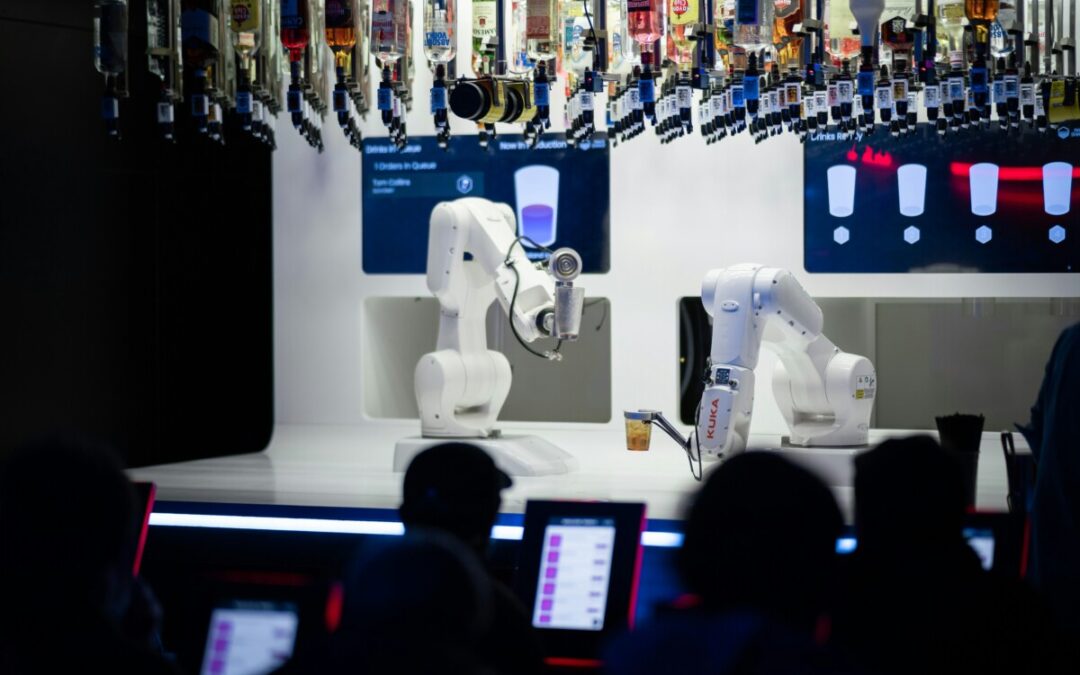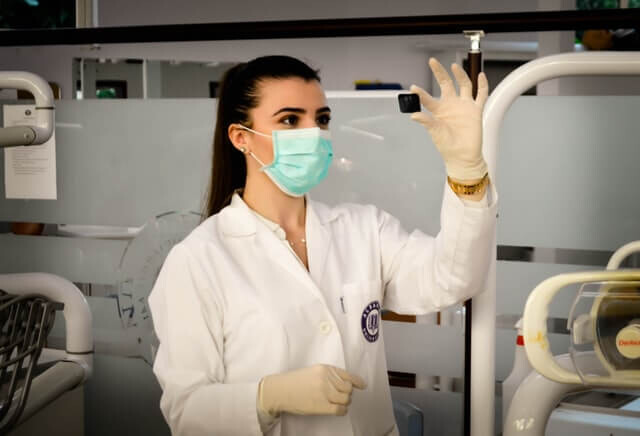What is RPA:
The world is evolving, and new and inventive technologies are required to keep up. The looming recessions and economic disasters have impacted a wide range of businesses and industries. In order to thrive in today’s competitive environment, companies must innovate and adopt next-generation technologies. RPA (Robotic Process Automation) is one of the most effective methods for automating and lowering the cost of ordinary commercial processes.
Robotic Process Automation (RPA) is a method for automating repetitive, time-consuming, and manual operations using bots and artificial intelligence. To maximize on the market opportunity while constructing an automation journey, leverage your business with a smart RPA Automation and AI. RPA technology provides a huge opportunity for businesses to improve performance, productivity, and cut costs, among other things.
Across all company industries and processes, robotic process automation has increased efficiency and performance by a factor of ten. RPA can automate over half of the procedures since they are predictable, recurring, and manual. Banking, healthcare, manufacturing, insurance, telecommunications, and retail are just a few examples of major businesses that use RPA.
Let’s take a look at some of the ways RPA may help your organization grow and save cost.
How RPA Helps With Growth Of a Company:

- Enhances Efficiency:
Automation can accomplish the same monotonous tasks faster than humans. When large proportioned, repetitive, and tedious jobs are automated, employee productivity soars, allowing them to move their emphasis away from lower valued work and toward projects that need more of their expertise, attention, and energy.
- Ensures higher precision and reliability:
Humans are likely to make errors. With RPA, the risks of mistakes are lowered if the processes are well described and the bots are developed correctly. Robots are trustworthy and constant even when asked to operate 24 hours a day, seven days a week. It eliminates rework and enhances performance by adhering to all rules and regulations.
- Improves Satisfaction among Employee and Customer:
In today’s marketing world, all sectors are under tremendous pressure to deliver the best possible customer experience while keeping prices low. RPA restructures current workflows, allowing workers to engage in more human interactions while also allowing them to focus on more strategic, important duties.
- Improves Compliance:
RPA in the system can assist organizations in developing robust compliance procedures. Automation provides a new level of control for firms, allowing them to monitor and control their internal processes. These records may be examined and monitored at any time, allowing businesses to promptly respond to any compliance issues that arise. Robots maintain a 100 percent accurate audit trail of every activity they or their team does within organizations, which may be viewed at any time throughout the compliance audit.
- Enhances Scalability:
RPA provides unrivaled flexibility in automation, allowing you to handle any number of business operations as your needs change. It does several processes simultaneously in a variety of contexts, from desktop to cloud. The army of autonomous bots can spread the ease of scaling that humans struggle with.
How RPA Helps With Cost Saving:

Robotic process automation (RPA) software is being utilized by a growing number of enterprises to speed up procedures and save costs.
Cost cutting has always been a hot subject, especially in these times of uncertainty in nearly every aspect of life. Robotic Process Automation is an effective tool for workflow enhancement in this regard because it allows businesses to direct the brightest minds from their teams to the business operations where they can be most relevant right now by automating time-consuming front- and back-office processes with data. Delegate less regular chores to your employees so that they may offer more to your organization. RPA also allows you to minimize the amount of time it takes for employees to complete predictable, rule-based business procedures.
RPA enhances throughput (the number of objects passing through a process or system) while lowering operational and human expenses. When it comes to speed, think about how long it takes a person to fill out a spreadsheet. This can be done in a fraction of the time using a robotic process automation system. That’s a significant amount of time and money saved over months or even years.
RPA allows for a considerable and immediate decrease in spending. While there are some upfront expenses, such as the app purchase, installation, maintenance, and upgrades, operating a software robot is substantially less expensive in the long run than managing full-time employees. It’s for the same amount of labor as well.
Enterprises may reduce total expenditures by 30 to 60% while enhancing delivery quality by automating laborious and unnecessary day-to-day tasks.
Conclusion:
A large number of enterprises have realized the potential benefits of Robotic Process Automation in a very short period of time. Many firms have embraced RPA software and moved many essential operations to automation after thorough study. Some of today’s most well-known brands, such as Amazon, Google, and Netflix, owe a large part of their success to the notion that they have properly caught the spirit of the digital trend. If you look closely, you’ll notice that organizations have emerged and are flourishing in the digital realm. The digital idea of presence is reshaping marketplaces and ushering in developments that were previously only imagined and written about in futuristic literature. However, the moment has come, and it will only be urged harder in the coming years. Uber, for example, not only uses digital platforms and automates processes, but also benefits handsomely from them. Indeed, businesses of all sizes and types are adopting RPA technology and reaping the benefits of their foresight.
ERP vs CRM: Key Differences, Strengths, and How Clavis’ ERP Drives Organizational Success
In the digital age, businesses strive to leverage advanced tools to streamline operations, boost productivity, and foster better customer relationships. Two pivotal software solutions that play a significant role in achieving these goals are Enterprise Resource Planning (ERP) and Customer Relationship Management (CRM) systems. While these tools may seem similar at first glance, they serve distinct purposes and offer unique benefits, and it is important to understand why you may need one or the other—or both in tandem.
1. What is ERP?
ERP stands for Enterprise Resource Planning, a comprehensive software suite that manages and integrates core business processes. These processes often include:
- Finance and accounting
- Human resources
- Supply chain management
- Inventory and order management
- Manufacturing
ERP systems centralise business data, allowing various departments to collaborate seamlessly and make informed decisions based on real-time insights.
Core Features of ERP Systems
- Centralized Data Management: Consolidates information from all business departments into one platform.
- Process Automation: Automates repetitive tasks to improve efficiency.
- Scalability: Can grow with your business, accommodating new functionalities as needed.
- Compliance Support: Helps organisations meet regulatory requirements.
- Advanced Analytics: Provides detailed insights to support strategic decision-making.
2. What is CRM?
CRM, or Customer Relationship Management, is software that focuses on managing a company's interactions with current and potential customers. The primary goal of a CRM system is to improve customer satisfaction, retention, and acquisition through personalised communication and efficient management of sales and marketing activities.
Core Features of CRM Systems
- Contact Management: Maintains detailed records of customer interactions and preferences.
- Sales Pipeline Tracking: Manages leads and monitors the sales process.
- Marketing Automation: Facilitates email campaigns, social media management, and more.
- Customer Support: Enhances post-sale services through ticketing systems and live chats.
- Data-Driven Insights: Helps identify trends to fine-tune marketing and sales strategies.
3. ERP vs. CRM: Key Differences
While ERP and CRM are essential for business success, they cater to different aspects of operations.
|
Feature |
ERP |
CRM |
|
Primary Focus |
Internal processes and operational efficiency |
Customer interactions and relationships |
|
Key Functions |
Accounting, supply chain, HR, inventory |
Sales, marketing, customer service |
|
Target Audience |
Internal stakeholders |
Sales, marketing, and customer support teams |
|
Data Integration |
Focuses on consolidating operational data |
Specialises in customer-centric data |
|
Scalability |
Enterprise-wide |
Primarily focused on customer management |
4. The Strengths of ERP Systems
ERP systems are the backbone of operational efficiency. Their key strengths include:
- Holistic Business View: ERP provides a comprehensive view of business operations by integrating data across departments.
- Cost Reduction: Automating processes reduces manual labour and errors, saving time and money.
- Improved Compliance: Centralized data simplifies regulatory reporting and ensures adherence to standards.
- Inventory Optimization: Enhances inventory management, reducing waste and ensuring timely procurement.
- Agile Decision-Making: Real-time data insights help leaders make swift, informed decisions.
5. The Strengths of CRM Systems
CRM systems shine in the realm of customer relationship management, with benefits such as:
- Enhanced Customer Insights: Tracks and analyses customer preferences to tailor interactions.
- Improved Customer Retention: Personalization and timely communication foster loyalty.
- Streamlined Sales Processes: Automates lead management, reducing manual intervention.
- Marketing Optimization: Helps segment audiences for targeted campaigns.
- Boosted Collaboration: Facilitates alignment between sales and marketing teams.
6. ERP and CRM: Complementary Tools
Though distinct, ERP and CRM systems are complementary and often integrated to deliver maximum value. For instance:
- CRM manages the front-end relationship with customers, while ERP handles back-end processes like inventory and order fulfilment.
- Together, they provide a seamless flow of information, ensuring that customer-facing teams have accurate, up-to-date data on orders and services.
7. Clavis' ERP: The Ultimate Solution for Organizational Success
Clavis' ERP stands out as a robust ERP solution designed to address the multifaceted needs of modern businesses. Here’s how it can drive your organisation's success:
a) Comprehensive Integration
Clavis' ERP integrates seamlessly with existing systems, including CRM platforms, to unify your business processes.
b) Real-Time Data Analytics
With Clavis' ERP, decision-makers can access advanced analytics tools that offer actionable insights into performance, trends, and potential opportunities.
c) Tailored Functionality
Highly customisable to suit the unique needs of businesses across industries, Clavis' ERP works for all—from manufacturing to retail and more.
d) Enhanced User Experience
The platform boasts an intuitive interface, making it easy for employees to adopt and use effectively.
e) Cloud Capabilities
Leverage cloud-based deployment for flexibility, scalability, and cost savings.
9. Choosing the Right Solution for Your Business
When deciding between ERP and CRM—or opting for an integrated approach—consider the following:
- Business Goals: Identify whether your primary focus is operational efficiency (ERP) or customer relationships (CRM).
- Scalability: Choose a solution that can grow with your business.
- Budget: Evaluate the total cost of ownership, including deployment and maintenance.
- Customization: Ensure the platform can be tailored to your specific needs.
Final Thoughts
ERP and CRM systems are indispensable for businesses aiming to optimise operations and enhance customer relationships. While they serve distinct purposes, their integration offers unparalleled value. With Clavis' ERP, you gain a robust tool that streamlines your operations and integrates seamlessly with CRM systems to provide a holistic business solution.
Some other posts you might be interested in.

AI + RPA: The Ultimate Duo to Scale Your Business Faster and Smarter
Scaling a business isn’t just about doing more—it’s about doing more intelligently. As digital transformation redefines the modern enterprise, two technologies have emerged as transformative powerhouses: Artificial Intelligence (AI) and Robotic Process Automation...

Effortless and Effective Digital Signage for Every Organization with Clavisign
Explore how digital signage from Clavisign is transforming business communication and engagement.

15 Applications of Blockchain in Healthcare
"Blockchain" refers to a shared irreversible record of a chain of transactions, each of which is made up of one block, and which is held together by cryptographic keys ("hashes"). These keys or signatures are maintained in shared ledgers and connected by a network of...
